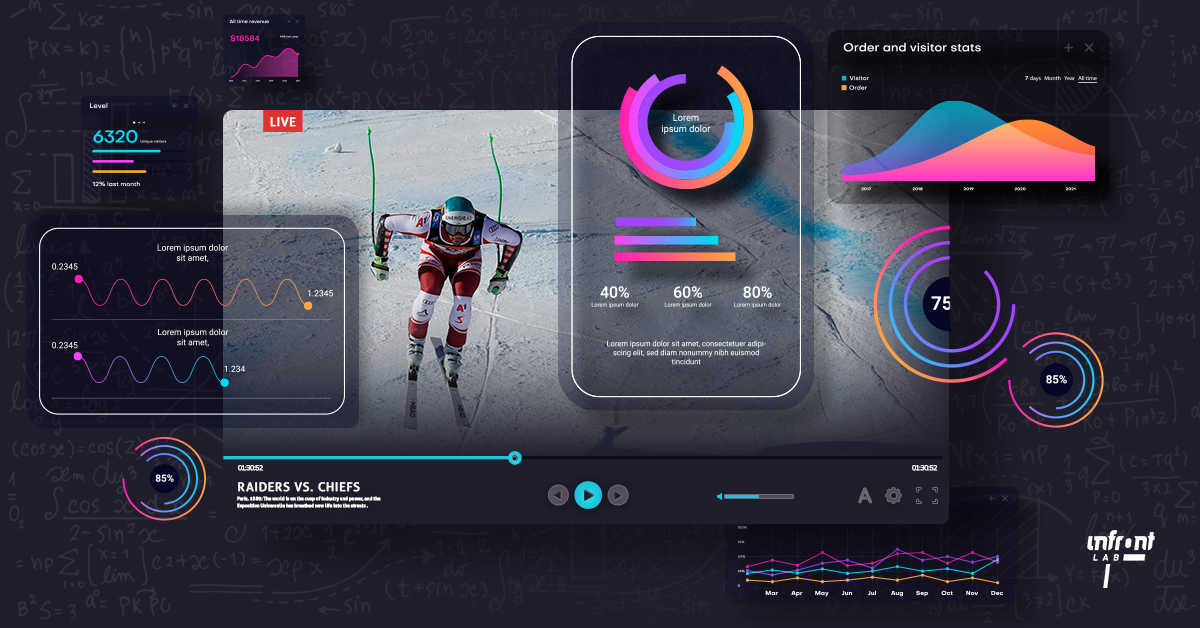Covid-19 forced many sports organisations to embrace innovation, further accelerating processes that were already in place.
From enhanced at-home viewing experiences to health monitoring, the pandemic touched every aspect of the industry. Perhaps one of the most affected areas is sports content, as many brands and organisations scrambled to find ways of reaching fans who couldn't attend games in person.
“Many brands that didn't have any kind of broadcast capabilities suddenly found themselves without a way to reach their audience,” explains Jan Umansky, CEO and Co-Founder of Videoflow, which helps entities create live and on-demand video experiences on OTT channels without having to code.
“If you're a broadcaster that was in the market for 50 years, it's very hard to turn off your channels and say, ‘well, from now on, I'm going to be OTT, direct-to-consumer and everything else is done,’” he says.
"It's a transition that will take decades. But if you never had any infrastructure before, and suddenly you cannot reach your audiences, then you obviously will be looking for additional experiences that you can provide.”
Providing new experiences
In today’s world, broadcasters and sports entities don’t have decades to dedicate to creating OTT platforms, especially with ever-changing viewing preferences. Lockdowns, for example, created a bigger thirst for content, Umansky explains, as fans were stuck at home, looking for entertainment.
But with limited budgets and time, creating OTT platforms is a challenge for many sports organisations. When OTT first entered our lives, it was a buzz word that excited the industry. But in reality, many didn’t understand it’s complexities.
"It's not just that the technology is changing, it's also your audience who is changing," says Umansky. "It's a change in the way your viewers consume your content, it’s a change in the devices that content is delivered on.”
Umansky watched broadcasters struggle, and eventually came up with the idea for Videoflow. He wanted to allow content owners to “do their thing,” meaning create and deliver great content to their viewers.
That was back in 2016, and the company began operating in 2018. It could be argued that the need for its services was accelerated during Covid. Videoflow is a code-free platform, and users don't have to type in any kind of code to create their OTT channels.
How does it work?
You import your content, choose which content will be presented on which channel and define the look and feel of your platform to match your brand identity. The whole process can take as little as several minutes if you’re eager to begin sharing content immediately, or you can spend longer perfecting your channels.
There is no limit to how many channels you can create, which Umansky says should be used to personalise each viewer's experience.
Introducing micro-bundling
Umansky and his team at Videoflow recently introduced their concept of micro-bundling.
“The concept itself means that different pieces of content that you own as a media brand could work better for you if you are able to serve them through different channels,” he explains.
“What we're saying is if you strip away the high cost and you strip away the time to market that it takes to launch an OTT platform, you could launch multiple platforms that bundle content in different ways. [These offerings] essentially create higher conversion because people will get exactly what they want instead of paying for one platform and enjoying a fraction of the content the platform has to offer.”
This could mean having one channel dedicated to a specific player that contains all games and interviews he or she conducted. You can create another channel dedicated to another player, and another for the team as a whole.
Micro-bundling allows sports companies to offer fans the best possible content for each individual without having to spend a lot of money on multiple, expensive platforms. They also remain the true owners of their content, rather than giving other platforms partial ownership.
Importance of content ownership
Many organisations struggle to use their content correctly, says Umansky, especially when it comes to monetising. Some search for a quick way to share videos and upload to sites like YouTube, which allow advertising for monetisation purposes. But putting videos on YouTube isn’t a great fit for most, especially small ones. Making an income from such channels is difficult if you have to split revenue, pay salaries and don’t have millions of views every month.
“There are a ton of articles coming out every day about the creator economy and how people are reclaiming ownership of their content,” says Umansky. “Suddenly they realize that their content is the economic driver of so many platforms and they see a fraction of the revenue.”
By creating their own OTT channels, he says, organisations can truly own their content from beginning to end, maintaining full control of revenue, while using social media to push their content to fans.
Content sources and the future
Content is rapidly developing, especially in the sports world. What we call content today wasn’t considered content ten years ago, and the same can be said about content creators. Nowadays, anyone with a camera is a content creator.
“One of the trends that is happening is around [content] sources, the amount of sources content is coming from is growing exponentially,” says Umansky. “Content owners are looking at this as, ‘hey, this is now a valid piece of content that viewers can watch.’ So obviously this is another monetisation opportunity.”
More sources translates into more content that needs to be delivered to the viewers. This trend will only continue to develop, and sports entities need to adapt and respond with ways of sharing volumes of content, while ensuring they are able to enjoy the profits as well.



.jpg)





